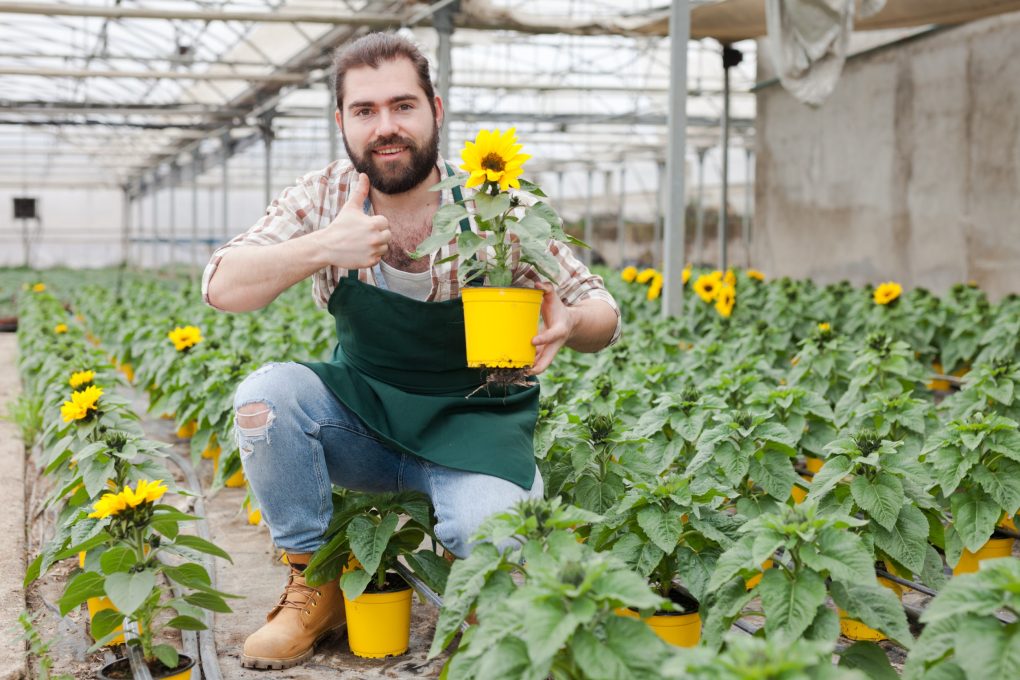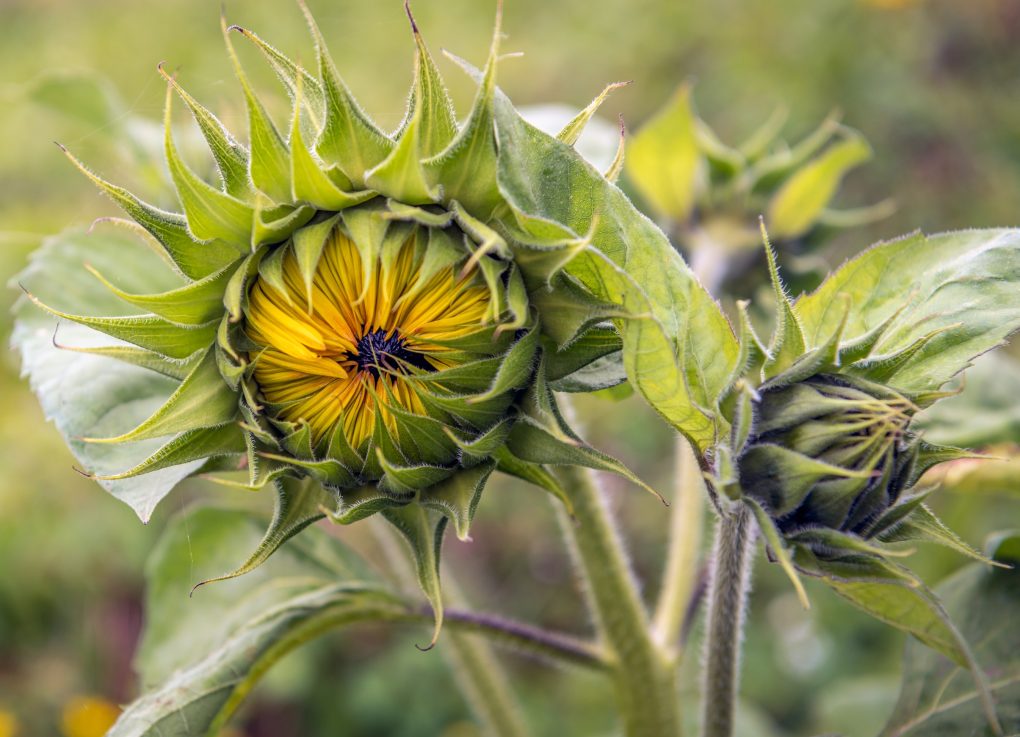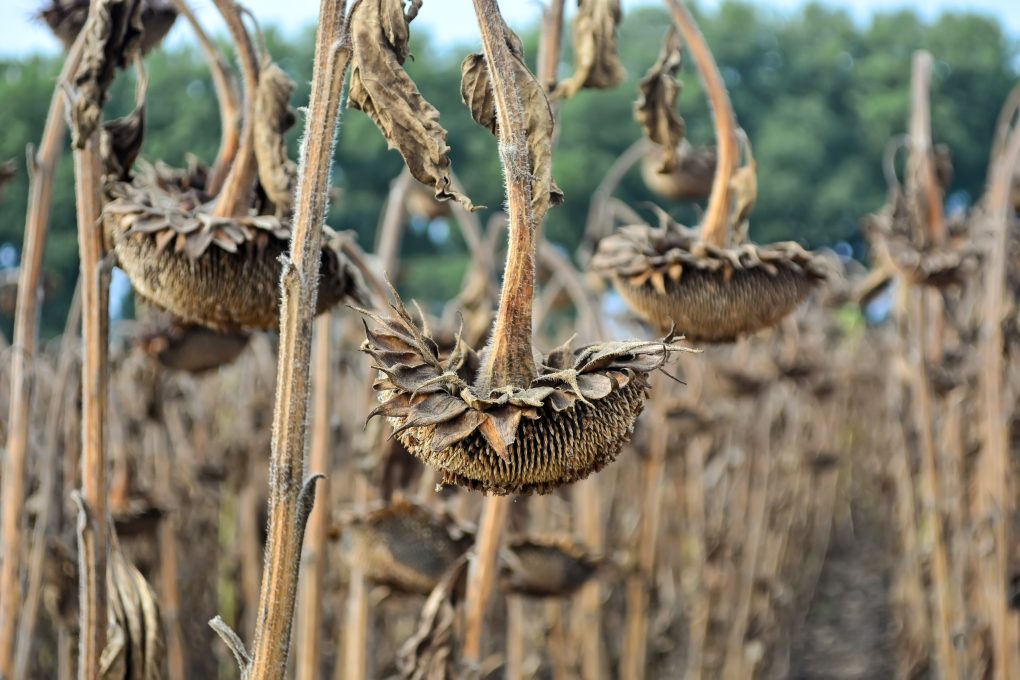How Sunflower Grow | Understanding the Life Cycle of Sunflower
Sunflowers are a flower you can’t ignore. These sun-loving beauties bloom in all seasons and wide varieties. From head to toe, sunflowers are fun-loving flower heads that love the sun, water, and fertilizer. These flowers are known for producing edible petals and seed heads. The scent of sunflowers can be subtle and only easily detectable if you get close to the blooms and sniff deeply. Moreover, sunflower heads require little upkeep to bloom well. With a growing sunflower garden, you’re planting seeds of joy for yourself and the environment.

Sunflower planting can be daunting, but with the proper care and techniques, it becomes an enjoyable experience. Here you will understand everything you need to know about sunflower growing, from planting seedlings to harvesting petals – yes, petals! We will also include a sunflower growth timeline for easy reference.
Table of Contents
Phases of Sunflower Growth
Phase 1- Planting the Seed
This is day one of planting. Sunflower plants are annuals that grow best in warm climates. Choose a sunny location for your sunflower garden and prepare the soil before planting sunflower seeds. Sunflowers prefer well-drained soil with a pH between 6-7. Soak the sunflower seeds in water overnight to increase germination, then plant them at the same depth as seedling sunders.
Space sunflower plants 12-18 inches apart, depending on their height. Water sunflower plants regularly – especially during the first few weeks after planting – to ensure good growth and bloom. To prevent sunflower plants from becoming susceptible to diseases or insects, mulch them with organic matter such as compost or other organic matter.
Once sunflower plants are mature, harvest them and dry them on a sunny windowsill or in a dehydrator. Save the seeds from your sunflowers to replant next year!
Phase 2 – Germination
This will take one week after planting. During this phase, you must provide your sunflower seed with the right environment to germinate correctly. Sunflower seeds should be soaked in water overnight to soften. This will help speed up germination and reduce the chance of sunflower seedlings being stunted. Plant sunflower seeds in a wide variety of soils, but it is best to test the soil first. As sunflower seedlings grow, keep them well-watered and fertilized. Once the seeds have germinated, they will enter the Vegetative Phase of their growth and development. In this phase, the sunflower seed will continue to grow and develop into a healthy and robust plant.
Phase 3 – The Seedling, Leaf, and Plant Development
This will take two to five weeks after planting. Sunflower seedlings need light, water, and warmth to grow. As a sunflower seedling grows, it will develop leaves and flowers. You must ensure that the sunflower seedling gets sufficient sunlight, regular water, and proper temperatures. Sunflower plants need plenty of nitrogen to grow properly. Sunflower plants also need regular watering to keep them healthy. Good sunflower plant soil should be well-drained for soil to remain evenly moist and free of dry spots. Additionally, sunflower seedlings should not be allowed to become sun-bitten or too dry.
After completing the reproductive phase, sunflower plants enter the vegetative stage, grow leaves, and produce seeds. During this stage, the sunflower plant will continue to grow in size and produce flowers. After completing the reproductive phase, sunflower plants typically enter a period of steady growth known as the vegetative stage, during which they continue to grow and produce seeds.
In the vegetative stage, sunflower plants can absorb sunlight and convert sunlight into energy. Once the sunflower plant has completed its reproductive phase and entered the vegetative stage, it can enter a period of steady growth known as the seed-bearing or harvest stage. During this stage, sunflower plants are ready for harvest and can be harvested for use in various applications, such as seed oil or meal.
Phase 4 – Growing a Bud

This will take five to ten weeks after planting. As sunflower plants grow, they will develop flowers and produce seeds. Once the sunflower plant has completed its reproductive phase and entered into the seed-bearing or harvest stage, it can enter a period of steady growth known as the bud-forming stage. During this stage, the sunflower plants’ stems may reach up to twelve inches in length and they will start to produce buds. Sunflower buds are an important part of harvesting sunflower crops; they are used for flower petals or oilseed kernels.
Phase 5 – Flowering
When flowering begins, sunflower plants will produce large flower petals. This will take ten to thirteen weeks after planting. The flowers will also have a sweet fragrance and may attract pollinators such as bees and butterflies. After flowering ends, the sunflower plant will enter into seed production mode. This means the plant will produce seeds in great numbers, which can be used to grow new sunflower plants or sold as seed products.
Stage 6 – Pollination
The sunflower plant is a hardy annual with large flower heads. It can be grown in various climates, from temperate to tropical regions. The sunflower flower head comprises bright yellow petals and sun-shaped seed heads. The flower head can reach up to 3 meters in diameter. Sunflower plants generally bloom from May to September.
Varieties of bees, flies and other insects pollinate the sunflower plant. As the flower head develops, the petals become dry and brittle, signaling that they are ready for pollination. When this stage is reached, sunflower plants will attract pollinators with bright colors or nectar-rich blooms. These pollinators help distribute the seed head’s fertilizing agent to ensure each seed gets the right nutrients to grow and develop into a healthy sunflower plant. If pollinators are absent, it’s important to ensure successful pollination, such as planting several varieties close together or using flowering sunflower plants that have been pollinated well in previous seasons.
Stage 7 – Seed Development
Sunflower seeds can be sown as soon as harvested but must be hardened first. Harden the sunflower seeds by covering them in a moist environment for two to three days. This will help them germinate easily and become strong seedlings.
Plant sunflower seeds in well-drained soil and water them regularly until they reach 1 foot tall. Water sunflower plants regularly until they are about 1 foot tall. At this stage, sunflower plants should be ready for harvesting. Harvest the sunflowers when they are about 2 inches tall and start to turn yellow or orange. This will encourage sunflower heads to develop fully and produce more seeds.
Sunflower seed harvesting can be done manually or using a harvesting machine. The sunflower seed harvesting season lasts from early summer to early fall.
Stage 8 – Harvesting

Follow the harvesting guidelines in the sunflower growing guide to ensure quality sunflower seed harvesting. After the sunflower seed heads mature and turn brown, they can be harvested. Check the condition of the sunflower stalks before harvesting. Rinse the sunflower heads under running water until the water is clear. This will remove any impurities and soil that may have accumulated on the head.
When checking for maturity, look for seed heads that are full, rounded, and dry. Once you’ve determined that a head is ready to harvest, cut it off with a sharp knife or pruning shears. Make sure to leave a 1-2 inch stub so the plant can continue producing heads throughout the season. After removing the head, make a small hole in the center of the stub and insert your hand to pull out the seed pod. Empty any damaged or rotten stalks and hang them upside down to dry.
Sunflower seeds can last for years if stored properly and handled properly. Thus, it’s important to follow sunflower growing guidelines when harvesting sunflower seed heads for the best results and quality sunflower seeds.
